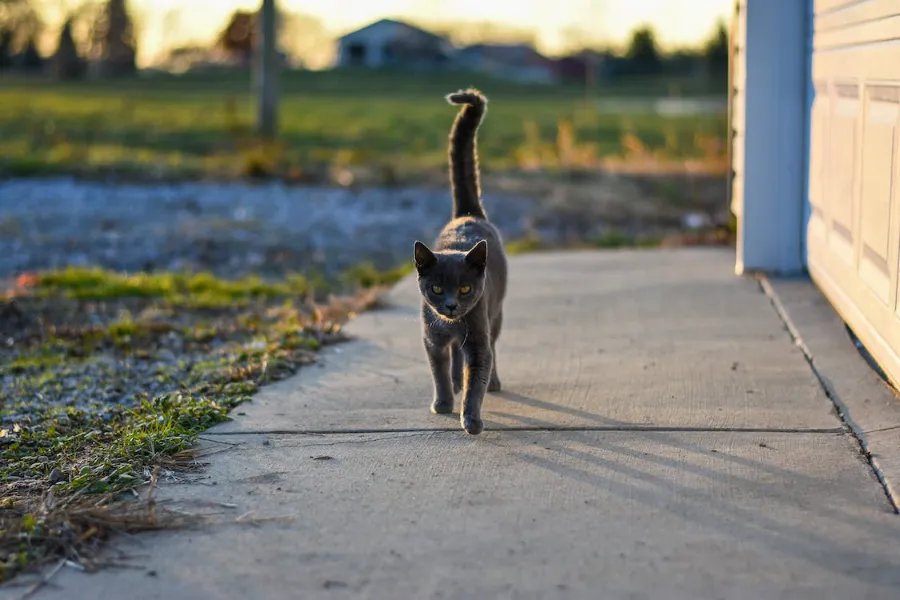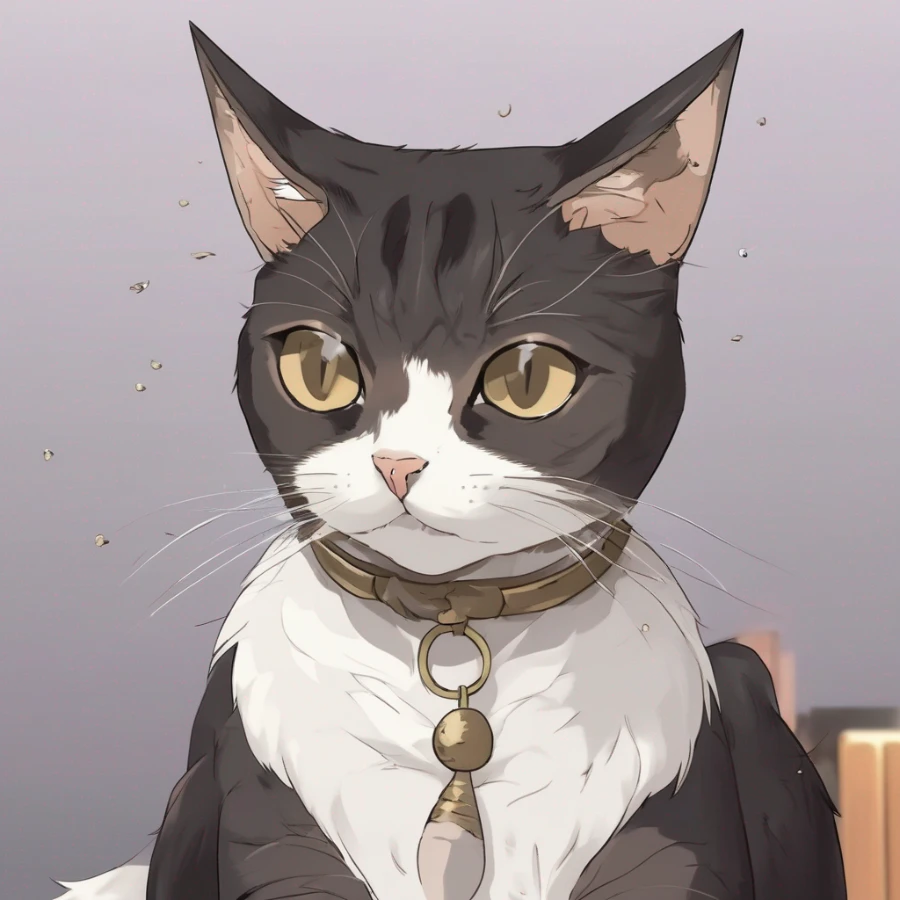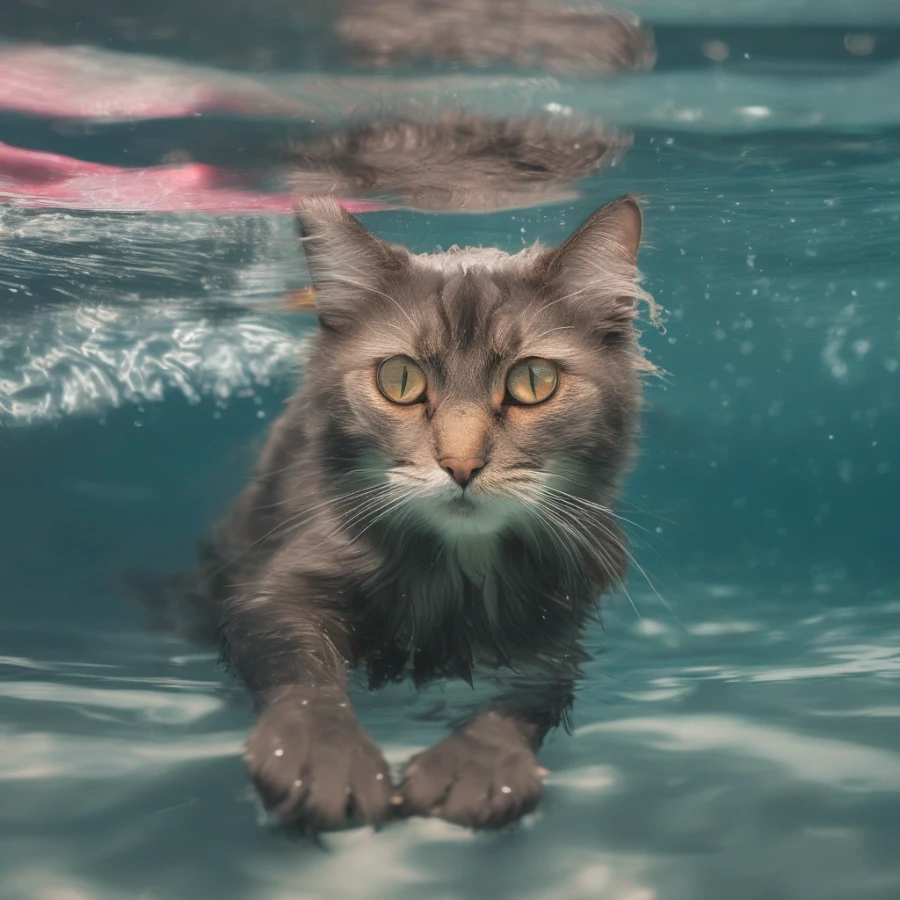Understanding Why Your Cat Overgrooms the Base of Their Tail

Published by: Tatsiana Korshik
Time to Read: 3 Min

Cats are fascinating creatures with intricate grooming behaviors, but when that grooming turns into excessive overgrooming at the base of their tail, it's a signal that something might be amiss. This comprehensive guide aims to provide insights into the reasons behind this behavior, potential causes, and actionable steps you can take to ensure your feline companion's comfort and overall well-being.
Allergic Reactions: Cats, like humans, can develop allergies to various environmental factors or certain ingredients in their diet. Allergies may manifest as itchy skin, prompting your cat to excessively groom the tail area.
Parasitic Infestations: Beyond fleas, mites and other parasites can inflict intense itching, compelling your cat to overgroom the base of their tail to alleviate the irritation.
Skin Infections: Bacterial or fungal skin infections can trigger itching and discomfort, leading to overgrooming as a way to soothe the afflicted area.
Pain or Discomfort: Physical discomfort or pain, such as lower back or tail region issues, could be the root cause of overgrooming behavior. This may be due to injuries, arthritis, or other medical conditions.
Stress and Anxiety: Cats are sensitive creatures, and stressors like changes in the environment, the addition of a new pet, or even a household move can provoke overgrooming as a coping mechanism.
Anal Gland Problems: Anal gland issues, such as impaction or infection, can induce discomfort and result in excessive grooming around the tail region.
Flea Control: Combat flea infestations with effective flea control measures for both your cat and your living environment. Collaborate with your veterinarian to identify suitable flea prevention products.
Managing Allergies: For allergic reactions, your veterinarian might recommend allergy testing or dietary adjustments to identify and manage allergens effectively.
Target Parasite Treatment: Should parasites be the root cause, your veterinarian will prescribe the appropriate treatment to eliminate parasites and ease your cat's discomfort.
Treating Skin Infections: If skin infections are identified, timely diagnosis and treatment are pivotal in providing relief. Rely on your veterinarian's expertise for guidance.
Pain Relief Strategies: For pain-related overgrooming, your veterinarian can suggest pain management strategies that enhance your cat's overall quality of life.
Behavioral Modifications: Address stress and anxiety by adopting behavioral modifications or employing calming techniques recommended by your veterinarian.
Regular Vet Check-ups: Regular veterinary visits are essential to catch potential health issues early and ensure your cat's well-being.
Create a Clean Environment: Maintaining a clean living space for your cat minimizes potential irritants and enhances their comfort.
Offer Enrichment: Engage your cat with enriching activities, interactive playtime, and toys that stimulate their body and mind.
Stress Management: Strive to create a stress-free environment for your cat by minimizing stressors and maintaining a consistent routine.
Conclusion
Excessive overgrooming at the base of your cat's tail is a behavior that warrants attention and investigation. By understanding the potential causes and taking proactive steps to address them, you're ensuring your cat's comfort and well-being. Consulting your veterinarian is pivotal in diagnosing the underlying issue and formulating an effective treatment strategy. Through identification and management, you can help your feline companion find relief from discomfort and continue to enjoy a healthy and contented life by your side.
Normal Grooming vs. Overgrooming: A Quick Differentiation
Before delving into the reasons for overgrooming, let's clarify the distinction between regular grooming and the concerning phenomenon of excessive grooming. While cats groom themselves habitually to maintain cleanliness, regulate temperature, and establish a sense of security, overgrooming involves compulsive behavior that can lead to hair loss, skin irritation, and even open sores.Potential Causes of Overgrooming at the Tail Base
Flea Infestation: Fleas are a common annoyance for cats and can drive them to overgroom, especially around the tail base, where these pests often congregate. Flea bites cause discomfort, triggering excessive grooming to relieve itching.Allergic Reactions: Cats, like humans, can develop allergies to various environmental factors or certain ingredients in their diet. Allergies may manifest as itchy skin, prompting your cat to excessively groom the tail area.
Parasitic Infestations: Beyond fleas, mites and other parasites can inflict intense itching, compelling your cat to overgroom the base of their tail to alleviate the irritation.
Skin Infections: Bacterial or fungal skin infections can trigger itching and discomfort, leading to overgrooming as a way to soothe the afflicted area.
Pain or Discomfort: Physical discomfort or pain, such as lower back or tail region issues, could be the root cause of overgrooming behavior. This may be due to injuries, arthritis, or other medical conditions.
Stress and Anxiety: Cats are sensitive creatures, and stressors like changes in the environment, the addition of a new pet, or even a household move can provoke overgrooming as a coping mechanism.
Anal Gland Problems: Anal gland issues, such as impaction or infection, can induce discomfort and result in excessive grooming around the tail region.
Steps to Address and Alleviate Overgrooming
Consult Your Veterinarian: If you suspect overgrooming, prioritize a visit to the veterinarian. A comprehensive examination and diagnostic tests are crucial to pinpoint the underlying cause and devise an appropriate treatment plan.Flea Control: Combat flea infestations with effective flea control measures for both your cat and your living environment. Collaborate with your veterinarian to identify suitable flea prevention products.
Managing Allergies: For allergic reactions, your veterinarian might recommend allergy testing or dietary adjustments to identify and manage allergens effectively.
Target Parasite Treatment: Should parasites be the root cause, your veterinarian will prescribe the appropriate treatment to eliminate parasites and ease your cat's discomfort.
Treating Skin Infections: If skin infections are identified, timely diagnosis and treatment are pivotal in providing relief. Rely on your veterinarian's expertise for guidance.
Pain Relief Strategies: For pain-related overgrooming, your veterinarian can suggest pain management strategies that enhance your cat's overall quality of life.
Behavioral Modifications: Address stress and anxiety by adopting behavioral modifications or employing calming techniques recommended by your veterinarian.
Proactive Measures for Prevention
To prevent future overgrooming episodes:Regular Vet Check-ups: Regular veterinary visits are essential to catch potential health issues early and ensure your cat's well-being.
Create a Clean Environment: Maintaining a clean living space for your cat minimizes potential irritants and enhances their comfort.
Offer Enrichment: Engage your cat with enriching activities, interactive playtime, and toys that stimulate their body and mind.
Stress Management: Strive to create a stress-free environment for your cat by minimizing stressors and maintaining a consistent routine.
Conclusion
Excessive overgrooming at the base of your cat's tail is a behavior that warrants attention and investigation. By understanding the potential causes and taking proactive steps to address them, you're ensuring your cat's comfort and well-being. Consulting your veterinarian is pivotal in diagnosing the underlying issue and formulating an effective treatment strategy. Through identification and management, you can help your feline companion find relief from discomfort and continue to enjoy a healthy and contented life by your side.



